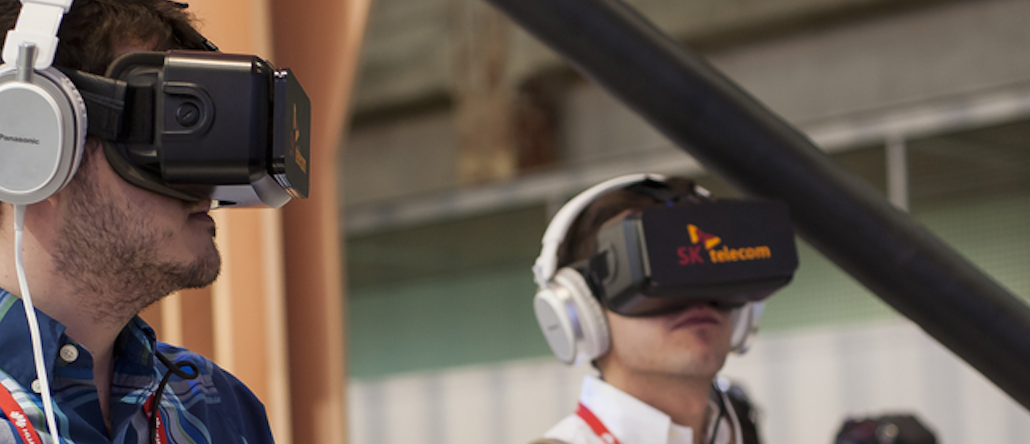
Shawn Fenton is a digital strategist at Blast Radius, a Chicago-based digital advertising agency.
In case you missed it, Volvo did something revolutionary last November: It used Google Cardboard — a virtual-reality headset made out of cardboard — to create the world’s first virtual test drive on a smartphone.
Dubbed “Volvo Reality,” the campaign paired an Android app with a Volvo-branded viewer, which together enabled customers to take a virtual test drive of the Volvo XC90 when using their smartphone. Customers loved it — so much so that, by January, interest in the XC90 was up 50 percent over the prior year, said Anders Tylman-Mikiewicz, vice president and general manager at Volvo.
Not long after that, our agency started hearing the same question from clients: Should we use Google Cardboard for a marketing campaign?
Our answer: That depends. While it’s great to be first to use something breakthrough like Google Cardboard, the technology’s value only comes from using it in a thoughtful, strategic way. Here are six points to consider before investing in it:
Make sure your message matches the medium.
One reason why Volvo’s campaign was so effective was because it used Google Cardboard to address a specific goal: It got more people to take a test drive of the XC90 by bringing the test drive to them. What Volvo needed perfectly matched what Google Cardboard was capable of: placing people at the center of a 360-degree experience. The takeaway: Make sure your brand has a legitimate reason for giving customers an immersive experience and that Google Cardboard is the right vehicle to deliver it.
Don’t underestimate the investment.
While Google’s viewer is cheap to make, the VR content viewed through it is expensive. (Just take a look at what Volvo had to do to make its app.) Producing and developing video assets for a 360-degree screen is still a custom process. And don’t expect to cut corners. If you create something that doesn’t look good or function well, your customers won’t care that you were using VR technology.
Ad position: web_incontent_pos1
Recognize that your customers may have a negative experience with the technology.
Google Cardboard, like all of virtual reality, is still in its infancy. As a result, the technology still has hurdles to overcome, such as latency — that is, the time delay between when users move their head and when the image in front of them changes. Delays that exceed 7 to 15 milliseconds (as they commonly do) can make your customers feel dizzy, sick or nauseous.
Lower your expectations.
Because mobile devices aren’t designed for viewing VR media at a close distance, Google Cardboard provides a viewing experience that’s less than optimal. If you’re a premium brand, that could create misalignment with your customers’ expectations. Keep in mind that this technology was created for consumers, not brands, so it doesn’t necessarily serve as an ideal medium for marketing.
Realize that the technology alone won’t create engagement.
Google Cardboard won’t give you a pass on communicating a relevant message to your audience. Just like with traditional advertising, you have to earn your customers’ attention by using the medium to tell interesting stories.
Consider other options.
While Google Cardboard is currently the most widely used and affordable vehicle for distributing VR media, it’s not your only opportunity to play in the VR space. There are other headsets in the market — such as the Oculus Rift or Samsung Gear VR — that have fewer latency issues and offer better resolution than the cardboard-based viewer. In addition, YouTube is now hosting 360-degree video. We can also expect that, with time, camera systems and rendering software designed for 360-degree media will become more accessible, while VR viewers will start to function better and cost less.
To be clear, this doesn’t necessarily mean that your brand shouldn’t integrate Google Cardboard into its marketing strategy. It does mean that you should consider the technology’s implications for your brand and use it in a careful, thoughtful way. Virtual reality is the midst of rapid change, so find your footing before you venture in.
More in Marketing

In the marketing world, anime is following in the footsteps of gaming
As marketers look to take advantage of anime’s entry into the zeitgeist, they might be wise to observe the parallels between the evolution of anime as a marketing channel and the ways brands have learned to better leverage gaming in recent years.

With the introduction of video ads and e-commerce, Roblox looks to attain platform status
Roblox is expanding into more areas than just ads in 2024. Much like platforms such as Amazon and Facebook have transcended their origins to evolve from their origins as online marketplaces and social media channels, Roblox is in the midst of a transformation into a platform for all elements of users’ virtual lives.

PepsiCo wants to remain a ‘driver of culture’ as it turns to influencers and activations amid rebrand
The soda-maker says it can translate cultural relevance into sales volume.
Ad position: web_bfu